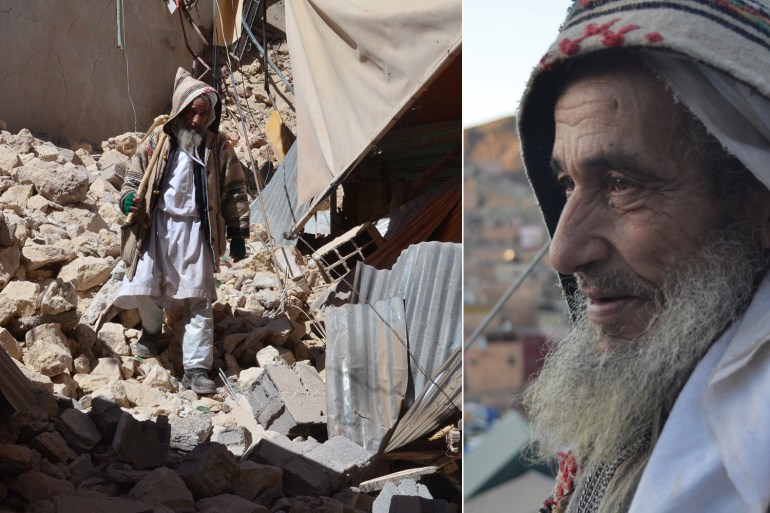Six months after the earthquake, Morocco’s Atlas villagers still in tents
Villagers are still huddled in their flimsy tents, waiting for assistance payments to rebuild their lives.
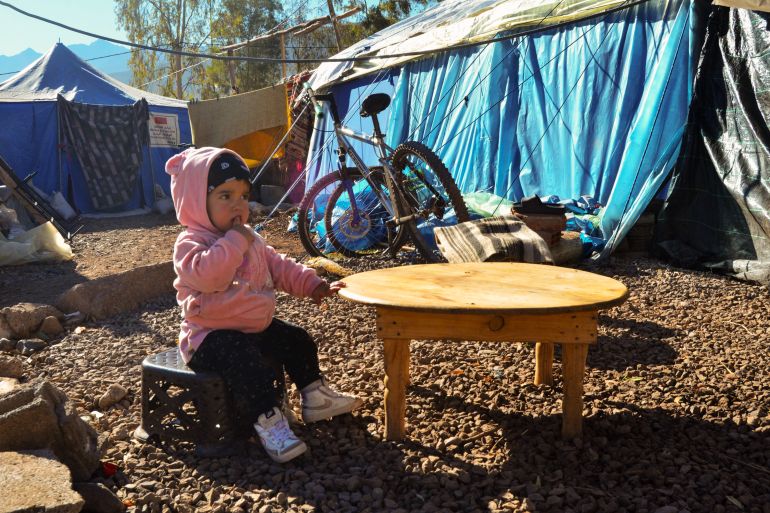
Atlas Mountains, Morocco – Abdelatif Haddad works on his truck against the backdrop of a cluster of tents where his entire village of Tagadirt is now forced to live, in the shadow of Morocco’s High Atlas Mountains as a winter sun lowers over the valley.
They have been living like this since a magnitude 6.8 earthquake struck the region six months ago in September and levelled their village which lay right there, deep in the hollow of the Ourika Valley.
Keep reading
list of 4 itemsHow Taiwan learned from the past to reduce the risk from earthquakes
How is Afghanistan coping six months after deadly quakes?
‘Violent rumble’: 4.8 magnitude earthquake rattles New York City, northeast
Abdelatif is shadowed by his smiling five-year-old son, Amir, who dances around his feet, offering as much hindrance as help, as his 56-year-old father struggles with the truck’s ancient motor.
His family was lucky. Of the 3,000 that died that day, 76 were from Ourika, whose steep walls shadow Tagadirt.
Many are now buried in the jagged cemetery that overlooks the village, linked only to the nearest mountain road by a long and snaking sand track, vulnerable to the wind and rain that rack the region during winter.
Abdelatif, like everyone who lost their home that autumn evening, expects to remain homeless for at least a year and a half. Likely more, they say.
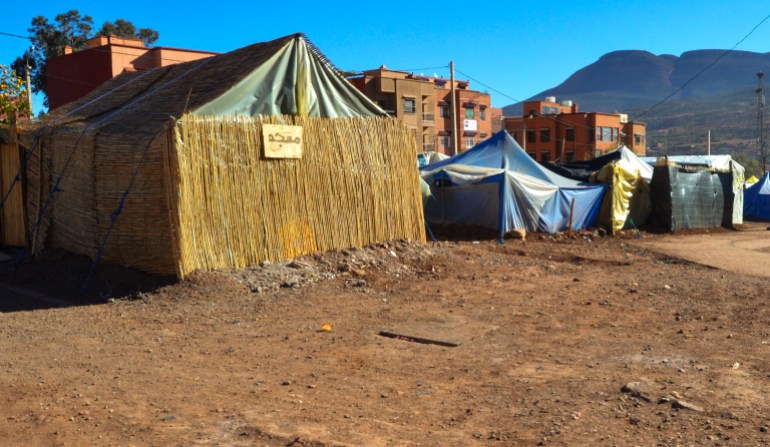
Angry and sick
Tagadirt is hardly unique. Across the sprawling mountain range, villages, several only navigable by moped and donkey, continue to eke out their daily lives under the protection of nothing but timber and plastic, while their homes sit in ruins, rubble or empty and at risk.
“I get angry, but not just angry, sick. Everyone here,” Abdelatif says, his calm voice at odds with the translated words. He gestures around the settlement of some 160 people, “Everyone here has been made sick by the stress. It can’t go on.”
According to ReliefWeb, 500,000 people were displaced during those first few hours on September 8, 2023, and 60,000 homes, many of which had stood for years, were destroyed or damaged.
A government compensation scheme has yet to make its presence felt, while the young, already torn between traditional lives in the mountains and the opportunities of the city, now wrestle with the conflicting impulses of staying and helping or leaving and supporting destitute families left isolated and vulnerable during the cold months.
At the start of the year, with a bitter winter ahead, Abdelatif and some 500 others attempted to march the two days from the mountain to the regional capital of Marrakech to call for the regional government’s intercession.
But they found their path blocked by authorities. Names were taken, villages noted and assurances of help given.
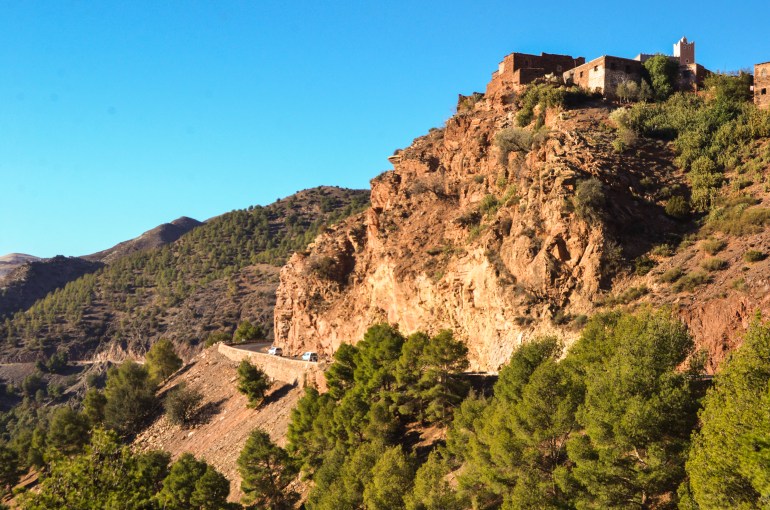
Abdelatif is still waiting.
Under a commission established by the king in the wake of the earthquake, monthly payments of 2,500 dirhams ($250) were promised to every family impacted by the quake. For every family who had their home damaged or destroyed, up to 140,000 dirhams ($14,000) would be available for rebuilding.
Moroccan government figures from the end of January indicate that about 57,600 families had received the monthly payments, with over 44,000 households accessing the reconstruction aid.
Al Jazeera was unable to speak to any family in receipt of the latter reconstruction payment.
It is not just about the direct compensation, Abdelatif explains. He points to the shadows of distant homes, clinging to a vertiginous hillside. “If there is another earthquake, the whole hill will come down on those houses. What are they going to do?”
The future
Talk of the “next earthquake” is commonplace in a population that still carries the trauma of the last one.
The magnitude 6.8 earthquake, roughly the equivalent of 30 of the nuclear bombs detonated over Hiroshima in 1945, was unprecedented in the region. Lives that had continued unchanged for centuries were upended.
The narrow, single-track roads that served as lifelines for the region were buried under tonnes of dirt and rock, making access for rescuers impossible.
Even after they were cleared, traffic jams snaked back for miles as the entire mountain range descended into a sprawling traffic jam.
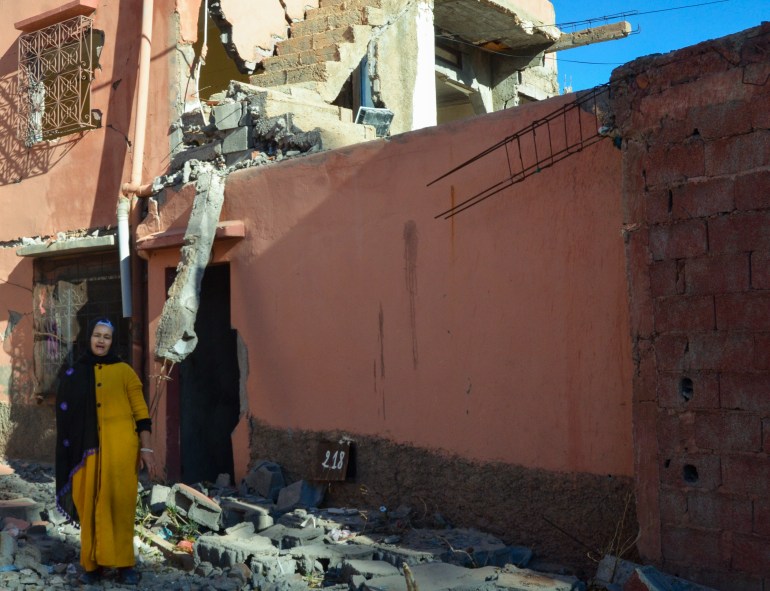
Many in the mountains survived the quake, only to die waiting for help.
Any confidence in the future, or the land that had supported families and villages for generations, was abruptly halted.
“Many people have left for Marrakech,” 36-year-old Fadma Ait Yahya from Tagadirt says. “They’re scared there’ll be another earthquake.”
Offers of international aid were quick to come as news of the disaster spread. Among those who rallied to Morocco’s cause were the EU, which pledged 1 million euros, and the IMF, which greenlit a loan of $1.3bn loan shortly after the tremors subsided. In addition, in Morocco, a bank account established for disaster relief announced that its total had exceeded $1bn by the end of September.
Little evidence of that money is evident in the small market town of Asni.
Fifty-year-old Yamna Lamini had been living in a tent along with five others since September until last week when high winds destroyed even that makeshift home.
Now, family members must make room for them within the small square of tents they assembled around a dirt and grass courtyard.
Yamna leads the way from the camp, past the hastily assembled mosque on its outskirts, continuing to the ruins of what was her house, which the family of seven was renovating when the earthquake struck, reducing its walls and freshly laid plaster to rubble.
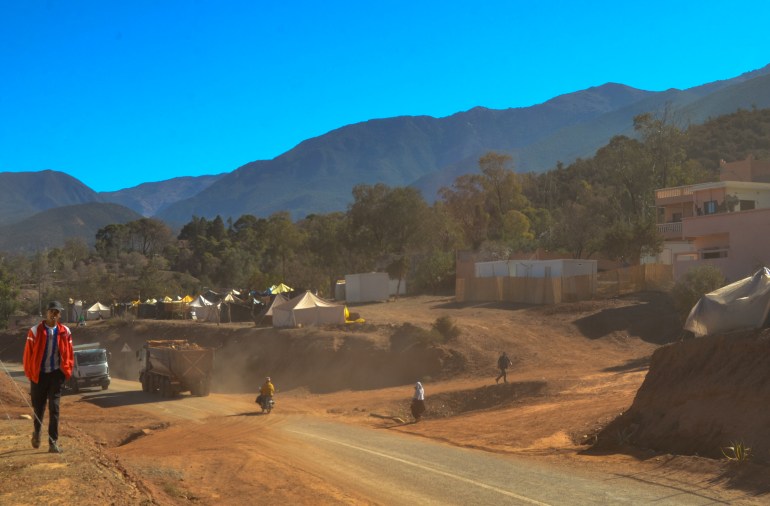
“I never imagined we would be living as we are now,” she says. “We were happy. We’d been building a future. Now we’re scared all the time,” she explains through a translator.
“We’re scared when it rains, scared when the winds blow and scared when it looks like snow, it can lie as thick as a metre [3.2 feet].”
According to Yamna, the government offered her some, 20,000 dirhams (about $2,000) to rebuild her house, with the promise of more to come.
The rest of her family, like most of those living in the plastic clusters that dot the Atlas mountainside, have received nothing.
“It’s the government,” she says, as tears choke her speech. “They don’t know what they’re doing.”
“The king sent a lot of help after the earthquake, but they… they’ve done nothing since. Everything has been destroyed.”
Al Jazeera has asked the Moroccan government for comment on the points raised in this piece several times. They have yet to do so by the time of publication.
In the absence of immediate help, many of the mountains’ youth have left to join the exodus of the ambitious, depopulating their mountain villages and travelling to the cities to earn money to send back to families left homeless and destitute by the earthquake.
Twenty-three-year-old Tayeb Ait Abdullah is unusual in having done the opposite.
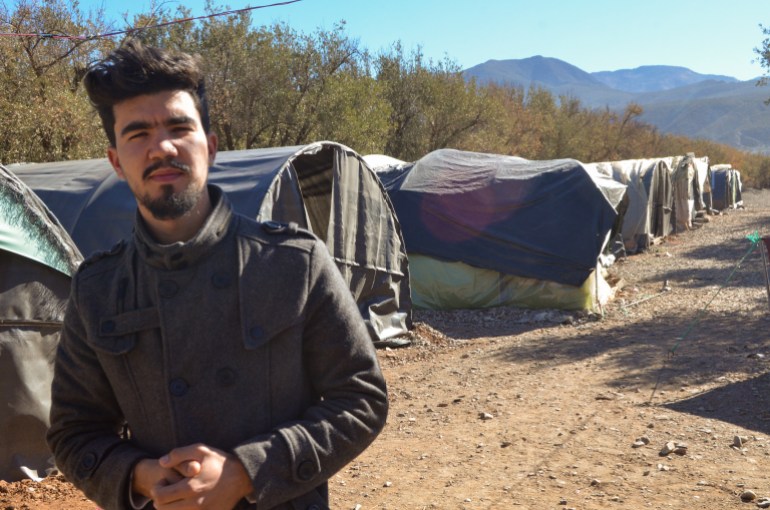
“I left university in Marrakech so I could take care of my family here,” he says from a crowded tent village outside Marigha.
“There really wasn’t the money anyway,” he tells a translator.
Tayeb passes a large tent bakery donated by an international NGO, where families can take turns to bake bread. Electricity lines connect the tents, while a well-ordered set of latrines sit just outside.
In the shade of a tent, a woman weaves a traditional rug of green and white on a loom.
Nobody appears to be going anywhere.
In the background, trucks rumble past on the road linking Marigha to Asni. They carry stones and rubble away, Tayeb says. Nothing is being built.
In the mountain village of Moulay Brahim, whose main thoroughfare had been entirely buried, the rubble has been removed.
However, away from the walkways that cut through the village, much of Moulay Brahim looks largely as it did right after the earthquake.
An old man, who only gives his name as Abdessadek remembers being photographed by Al Jazeera shortly after the earthquake as he scrambled across the rubble.
“I was trying to imagine what would happen next,” he recalled through a translator, his voice frail.
He pauses, surveying the village, its tents and piles of loose stone, dust and rubble.
“No one can anticipate what the future will bring.”
